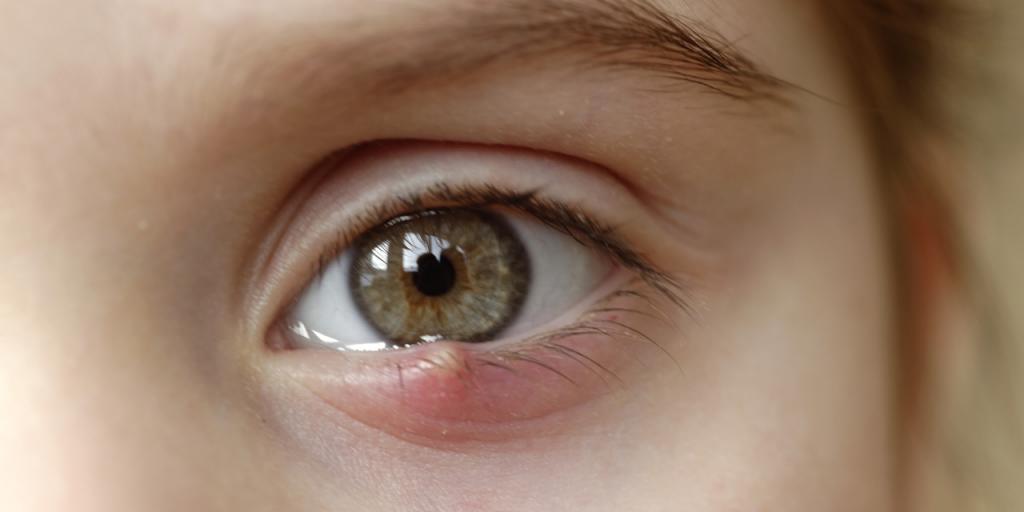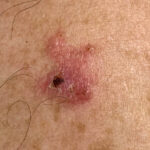Superficial ocular infections are localized infections affecting the outermost layers of the eye and its adnexa, including the conjunctiva, corneal epithelium, eyelid margins, and lacrimal structures. These infections, while typically non-vision-threatening, can cause significant discomfort, photophobia, and irritation. Common superficial ocular infections include conjunctivitis, blepharitis, keratitis, and dacryocystitis, often resulting from bacterial, viral, fungal, or parasitic agents.

Common Types of Superficial Ocular Infections
1. Conjunctivitis (Pink Eye)
Conjunctivitis is the inflammation or infection of the conjunctiva, the transparent membrane covering the sclera and inner eyelids.
- Bacterial Conjunctivitis: Caused by Staphylococcus aureus, Streptococcus pneumoniae, or Haemophilus influenzae. Presents with purulent discharge, eyelid edema, and conjunctival hyperemia.
- Viral Conjunctivitis: Often due to adenovirus. Features include watery discharge, preauricular lymphadenopathy, and high contagion.
- Allergic Conjunctivitis: Triggered by allergens such as pollen or dust mites, presenting with itching, tearing, and papillary hypertrophy.
2. Blepharitis
Blepharitis is chronic inflammation of the eyelid margins, often associated with bacterial overgrowth, seborrheic dermatitis, or meibomian gland dysfunction.
- Symptoms: Redness, flaky skin on eyelids, burning sensation, and crusted eyelashes.
- Complications: May predispose to recurrent chalazia, styes, and secondary infections.
3. Superficial Keratitis
Keratitis involves inflammation or infection of the corneal epithelium and superficial stroma.
- Bacterial Keratitis: Rapid-onset pain, corneal ulceration, and hypopyon formation in severe cases.
- Viral Keratitis: Typically due to Herpes Simplex Virus (HSV); presents with dendritic ulcers seen on fluorescein staining.
- Contact Lens-Related Keratitis: Increased risk due to poor hygiene, extended wear, and microbial contamination.
4. Dacryocystitis
Infection of the lacrimal sac, usually resulting from nasolacrimal duct obstruction.
- Presents with: Tearing (epiphora), pain near the inner canthus, swelling, and possible purulent discharge.
- Typically bacterial in origin (S. aureus, S. pneumoniae).
Etiological Agents and Risk Factors
Common Pathogens
- Bacteria: Staphylococcus aureus, Pseudomonas aeruginosa, Moraxella catarrhalis
- Viruses: Adenovirus, HSV-1, Varicella-Zoster Virus
- Fungi: Candida spp., Fusarium, Aspergillus (less common in superficial cases)
- Parasites: Acanthamoeba in improper contact lens use
Risk Factors
- Poor hygiene (especially with contact lenses)
- Close contact with infected individuals
- Pre-existing eyelid conditions
- Dry eye syndrome
- Environmental exposure (dust, allergens, chemical irritants)
- Systemic immunosuppression
Clinical Presentation and Symptoms
Superficial ocular infections generally manifest with:
- Redness and irritation
- Itching or burning sensation
- Watery or purulent discharge
- Foreign body sensation
- Photophobia
- Crusting around eyelids (especially upon waking)
- Blurred vision (transient and due to discharge or surface irregularities)
The onset may be acute or subacute, and symptoms often vary based on the causative organism and affected structure.
Diagnostic Approach to Superficial Ocular Infections
Clinical Examination
- Slit-lamp biomicroscopy: Evaluates the anterior segment, corneal clarity, conjunctival status, and eyelid margins.
- Fluorescein staining: Identifies epithelial defects, corneal ulcers, or dendritic lesions.
- Lid eversion and expression: To assess meibomian gland function and presence of follicles or papillae.
Laboratory Investigations
- Conjunctival or corneal swabs: For Gram staining and culture
- Polymerase chain reaction (PCR): For viral etiologies like HSV or adenovirus
- Lacrimal sac aspirate culture: In suspected dacryocystitis
- Allergy testing: In chronic allergic conjunctivitis cases
Treatment and Management Strategies
1. Antibiotic Therapy
- Topical broad-spectrum antibiotics (e.g., moxifloxacin, tobramycin) are first-line for bacterial conjunctivitis or keratitis.
- Oral antibiotics may be needed for severe blepharitis or dacryocystitis (e.g., amoxicillin-clavulanic acid).
- Antibiotic ointments offer better retention and overnight protection.
2. Antiviral Therapy
- Topical ganciclovir gel or oral acyclovir for HSV keratitis
- Supportive treatment only in adenoviral conjunctivitis, with cool compresses and artificial tears
3. Anti-Inflammatory and Supportive Measures
- Lubricating eye drops to relieve dryness and discomfort
- Topical corticosteroids under supervision, particularly in viral or allergic forms
- Warm compresses and eyelid hygiene for blepharitis
- Antihistamines or mast cell stabilizers for allergic conjunctivitis
4. Surgical Intervention
Indicated in chronic dacryocystitis or non-resolving obstructions:
- Dacryocystorhinostomy (DCR)
- Punctal dilation or irrigation
Prognosis and Complications
Superficial ocular infections, when managed early and correctly, carry an excellent prognosis. However, delayed treatment or misdiagnosis may result in complications:
- Corneal scarring
- Secondary bacterial infection
- Vision impairment
- Chronic conjunctivitis or blepharitis
- Recurrent chalazia or styes
Prevention of Superficial Ocular Infections
Preventive measures play a crucial role in minimizing recurrence and spread:
- Frequent hand washing
- Avoid touching or rubbing the eyes
- Proper contact lens hygiene and storage
- Avoid sharing eye cosmetics or towels
- Protective eyewear in dusty or hazardous environments
- Regular eye exams for those with chronic ocular surface disorders
Superficial ocular infections encompass a spectrum of conditions that require careful clinical assessment and targeted treatment. While generally benign, these infections can significantly impair quality of life and, if neglected, lead to serious ocular complications. Early recognition, appropriate therapy, and diligent preventive strategies are fundamental to restoring ocular health and maintaining visual function.

